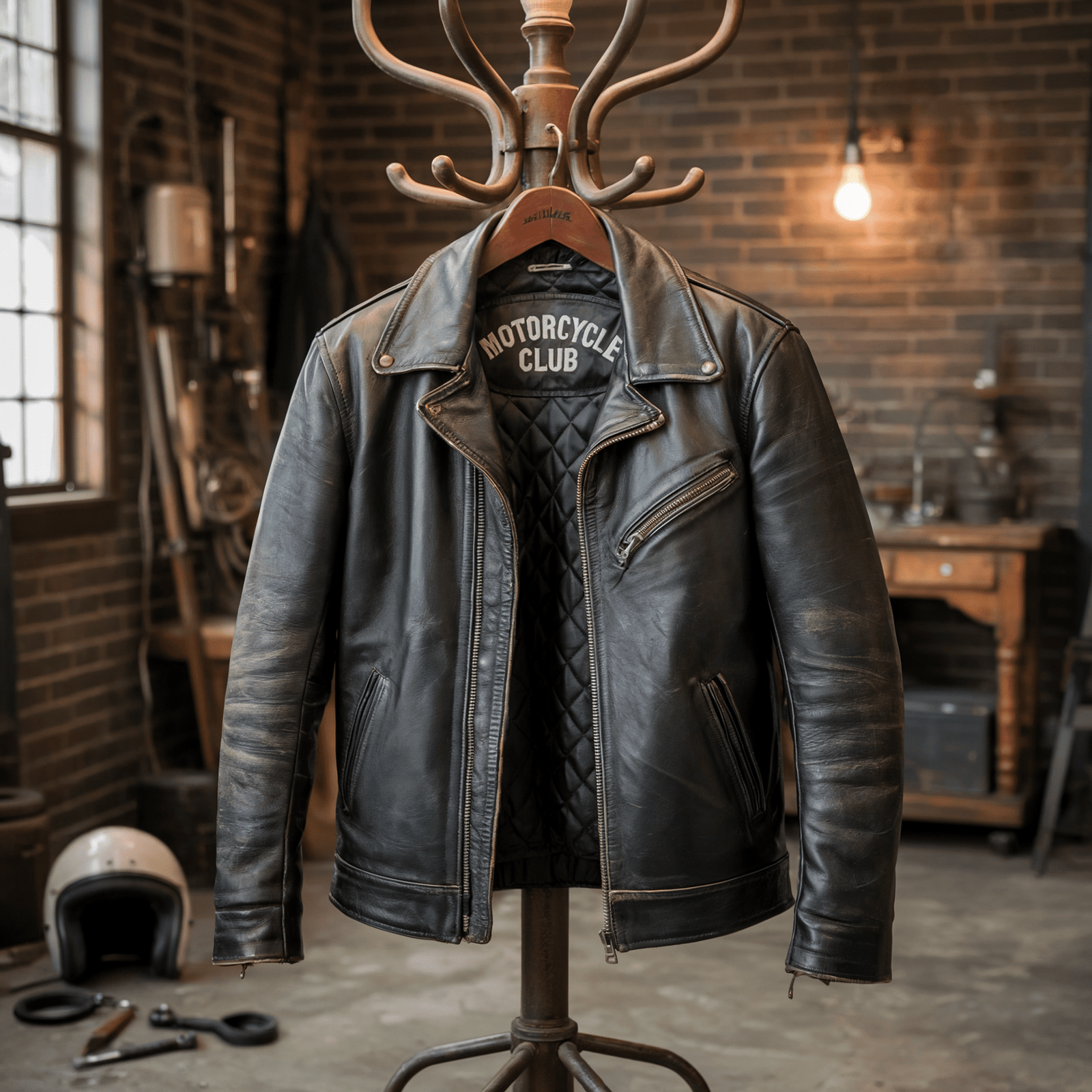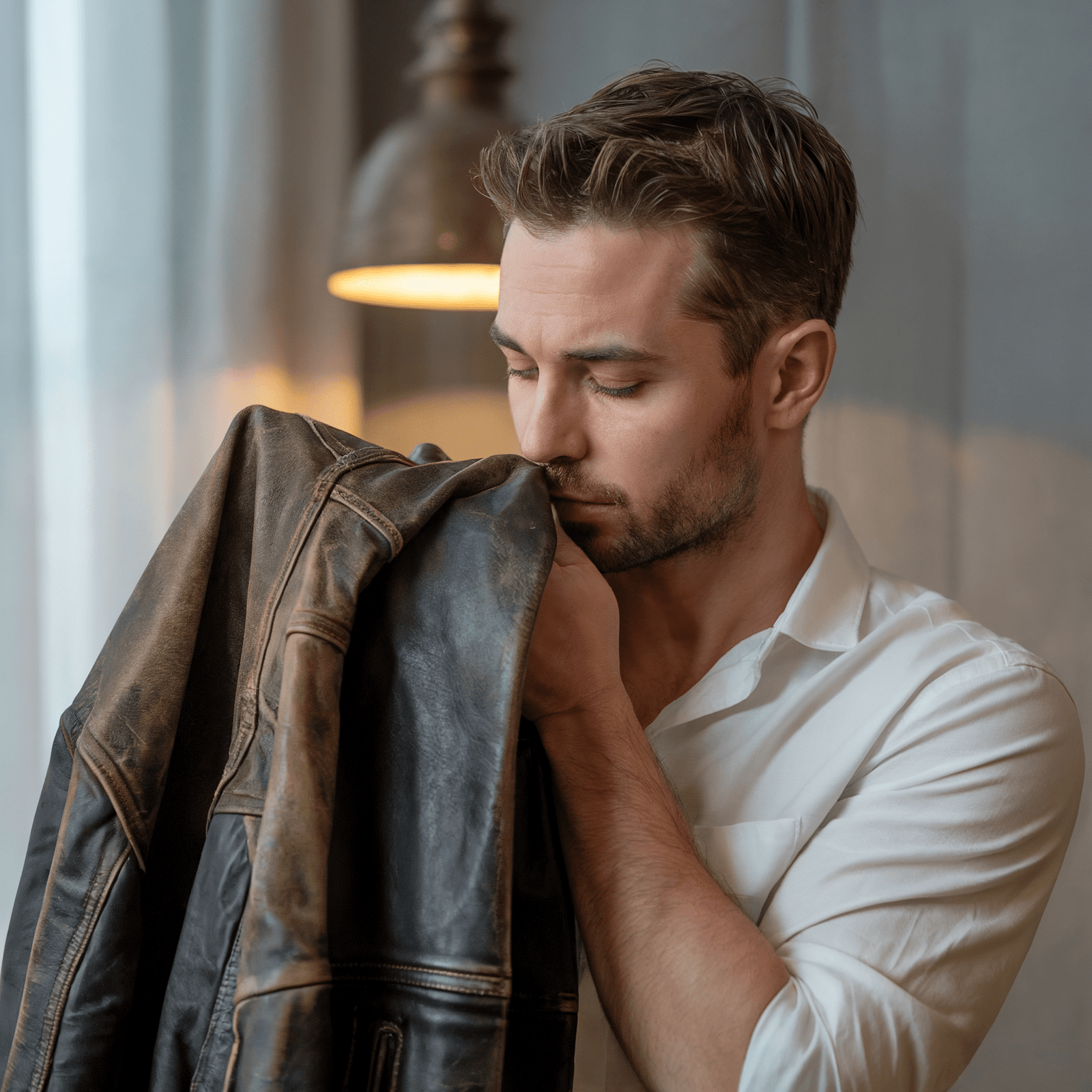Your Cart is Empty
BLACK FRIDAY SALE $25 OFF - USE COUPON BFRIDAY25 AT CHECKOUT NOW!
Menu

BLACK FRIDAY SALE $25 OFF - USE COUPON BFRIDAY25 AT CHECKOUT NOW!

Leather Stitching Types: Crafting a Leather Product
by Jennifer Smith February 22, 2025 6 min read
Whether you are a beginner leather craftsman or just someone ordering a customized leather product, it's important to know about different leather stitching types. Choosing the right stitch for a leather product, like a bag corner, belt, or jacket seam, ensures durability and style.
Stitch types depend on whether the product is machine-sewn or handcrafted. Let's explore the different types of leather stitching and where each of them is used.
What Are the Most Common Leather Stitching Techniques?
Leather is different from fabrics. It’s thick, and any hole made in it cannot be filled back. Therefore, a variety of tools and stitching techniques are used to create different types of products from leather. Each of the following stitches varies in sturdiness, design, and whether two pieces of leather are to be joined side by side or overlapped.
Single Stitch: Single Needle Stitch
It's a simple and quick hand-sew stitching method using one needle. The single stitch is mostly used for decorative purposes. It is done via a single needle passing through the holes to form a single line of stitches; in the end, you can tie a knot or simply burn the remaining thread.
Double-Stitch
The double stitch is a leather stitching pattern in which two needles are used. Here is how to double-stitch leather:
Double-stitching leather ensures durability with two parallel stitch lines. Mark lines 3mm apart, and punch holes along both lines. Begin with the back line using saddle stitch. Thread needles on each end, cross through holes, and pull tight. Repeat for the second line.
Saddle Stitch—Straight Stitch
Saddle stitch is one of the strongest stitching techniques used for high-stress areas in wallets, bags, belts, and shoes.
To start the saddle stitching technique, first prepare the leather by making a stitch line with even space. Then punch holes with the help of an awl or punching tool.
Now using a waxed thread with needles attached to both ends, start stitching by pushing one needle through the first hole and pulling it halfway in a manner that both needles have equal thread. After that, pass the left needle through the next hole and the right needle into the same hole from the opposite direction.
Pull tight and repeat the sewing process for all holes, making sure the stitches are strong and even.
Box Stitch
Box stitch is a leather stitching type generally used to join two leather edges at right angles.
Box stitches are usually used in making leather bags, cases, and boxes. t provides a sturdy and professional look and adds strength when the product needs to hold its shape.
Insert needles through the holes using saddle stitching, then backstitch into the last 2-3 holes for security. You can use sandpaper or burnishers to smooth the edges for a polished look.
Cross Stitch
Begin cross stitching by making parallel holes in two leather pieces aligned side by side. Pass the thread as if making an X, making sure there is an equal thread on each side. Cross one side of the thread over to the opposite side and insert it diagonally through the second hole, then pull it through completely.
Repeat the process on the other side in the opposite direction until the end and tie off the last x to make the stitch strong.
Baseball Stitch
This method is similar to a cross stitch and creates a stitch line with v-shaped stitches that resemble the seam of a baseball.
Start from the first set of holes, insert the needles from the backside, pass the needles from the seam before the hole, and repeat the process until you get a neat pattern of seams of a baseball. For the last few stitches, go across straight a few times to secure the stitch line. To make it durable, you can tie a knot on the back side of the pattern to prevent unraveling.
Z Style Stitch—Hand Stitching
Zigzag or z-style stitching is one of the most common hand-sewing methods for leather. You can say it is an extension of a single stitch. The only difference is it creates a z-shaped pattern. It uses a single thread with a needle passing through the holes on the edges of two pieces of leather. Then, create a slant line when passing through the holes, crossing over the holes until you reach the last holes, repeating in the same manner.
Butt Stitch
Butt stitching works best for joining two leather pieces edge to edge.
Start from the first stitch mark, insert the awl halfway through the leather, angle it, and take it out from the middle don't tear if dealing with thin leather from the top. Start from the top of the first piece of leather and go to the bottom of the other piece of leather.
Repeat the process as you do in the saddle stitch. Enter from the sides, and passing through the holes, enter into the second piece. At the end, burn the thread to give it a finished look.
French Seam Stitch
French seam stitch is a machine stitching method. In this method, the raw edge gets completely covered. Start by sewing two pieces together with a very close stitch. Cut about 1-2 mm from the stitches and flatten it by hammering it. This method is best for securing corners.
Methods of Stitching: Hand Stitch vs. Machine Stitch
There are two main functional types of leather stitching, one where you stitch leather by hand, or one where a machine is used. Here’s how they differ:
|
Feature |
Hand Stitch leather |
Machine Stitch Leather |
|
Speed |
Time-consuming |
Time-saving |
|
Precision |
Best for complex work |
Ideal for even stitches |
|
Durability |
Depends on skill level |
Mostly durable |
|
Flexibility |
Excellent for detailed or curved areas |
Limited efficiency |
|
Ease of use |
Need skill and practice |
Requires initial setup and maintenance |
|
Cost |
Low-cost tools like needles, awls |
High investment in the beginning |
|
Aesthetic Appeal |
Unique and artisanal look |
Professional and uniform appearance |
|
Application |
Best for mending and detailed projects |
Ideal for clothing, upholstery, and automotive industry |
|
Portability |
Easy portability |
Needs stationary setup |
|
Thickness of Leather |
Can handle up to 3-4 mm thick leather |
.8 mm and 1 mm for the home sewing machine 1-3 mm thick for industrial machines and More than 3mm for special sewing machines |
Functional vs. Decorative Leather Stitching
The main difference between functional and decorative stitching is that you need to ensure a strong bond for the former to ensure the durability of a product. Have a look at the side-by-side comparison of both types of stitches.
|
Feature |
Functional Stitching |
Decorative Stitching |
|
Priority |
Strength and utility |
Customization and fashionable looks |
|
Application |
Used for seams, straps, and repairs mainly |
Design, embroidery, and embellishments |
|
Stitch type |
Generally simple and straight |
Complex and creative |
|
Thread Material |
Strong and durable |
Focus on colored or specialty threads |
|
Skill Level |
Basic to advance |
Advance and artistic |
|
Durability |
High |
Moderate |
|
Required Tools |
Basic leather stitching tools |
Specialized tools for designing |
|
Examples |
Belts, Purses, wallets, shoes |
Leather jackets, furniture, and ornamental bags |
Customized Leather Stitching
At Leather Skin Shop, we customize leather jackets, shoes, hats, and bags so that you can get a product designed exactly how you like it. Our customization process involves immaculate stitching, with our skilled artisans using the sturdiest stitching techniques to ensure a long-lasting product.
We offer reliable, affordable customization services to create bespoke leather products tailored to your needs.
FAQs
Which Stitch Type is Suitable for Leather Products?
The most suitable stitch types for leather products are durable double stitches, saddle stitches, baseball stitches, single z stitch, and box stitches. These all use two needles for one thread to lock the thread in place without exposed areas on the surface.
Which Stitch Type is the Strongest?
The strongest leather stitch type is the saddle stitch. The saddle stitch is known for its durability because it distributes tension evenly across the seam, making it less likely to unravel if one thread breaks.
Which Leather Stitch is the Easiest One?
The easiest leather stitch is the running stitch. This method involves passing a single needle and thread through the leather in a simple back-and-forth motion. It requires minimal technique and tools, making it accessible for beginners.
What Are Leather Hand Stitching Techniques?
If you want to craft a leather product by hand to make it more appealing aesthetically or durable, you can use these leather stitch patterns:
- Single stitch
- Saddle stitch
- Box stitch
- Cross stitch
- Baseball
- Running stitch
What Tools Are Needed for Hand Stitching?
Here are the tools used in leather stitching techniques by hand.
- Leather stitching chisel set
- Waxed thread
- Awls
- Wing dividers
- Stitching grooves
- Stitching pony and horse
- Work surfaces
- Sewing needles
- Edge beveled
- Thimble
- Flat leather knife
- Malet
What Are the Various Types of Threads Used for Leather Stitches?
Choosing the right thread for your craft is crucial to keep the final product durable and appealing. Here are the main threads you can use for leather stitches:
- Waxed polyester thread
- Bonded nylon thread
- Polyamide
- Hemp
- Linen
- Braided thread
Can You Sew Leather Using a Regular Sewing Machine?
With a few minor adjustments, you can use a regular sewing machine to sew leather. When sewing leather that is thick, such as cowhide or sheepskin, it is best to use heavy-duty needles made for leather. Plus, choose nylon or polyester thread for longevity and use adequate tension settings to prevent the thread from breaking.
Wrapping Up
You now understand the different types of leather sewing stitches and where each is best used. If you want a customized leather product with the stitch type of your choice, get in touch with our design consultants to help us fulfill your particular needs.
Leave a comment
Comments will be approved before showing up.
Also in Blog | Leather Skin Shop

Types of Sleeves in a Leather Jacket
by Jennifer Smith August 24, 2025 6 min read
The different types of sleeves shape the shoulder, control the movement, and change how the leather jacket looks in motion. There are various types of sleeves, such as cap sleeves, bell sleeves, raglan sleeves, and more.

How to Get Smell Out of Leather Jacket?
by Jennifer Smith August 08, 2025 4 min read
Over time, a leather jacket can smell like sweat, mildew, or smoke. But do not worry, there are safe, proven ways to get rid of those unpleasant smells at home.

What Is A Trench Coat
by Jennifer Smith August 02, 2025 6 min read
A trench coat is a long, lightweight outerwear piece designed to protect against wind and rain. Its defining features include a double-breasted front, a belted waist, wide lapels, and often epaulets and a storm flap.
Leather Jackets for Men
Leather Jackets for Women
Accessories for Men & Women
Recent Articles
- Types of Sleeves in a Leather Jacket
- How to Get Smell Out of Leather Jacket?
- What Is A Trench Coat
- What Is A Peacoat Jacket?
- What is Polyester Fabric?
- What is Satin Fabric?
- What is Shearling Leather?
- Varsity Jacket Or Letterman Jacket? Everything You Need To Know Before Buying
- What is Semi Aniline Leather?
- What Is Cotton Fabric?
Size Chart
